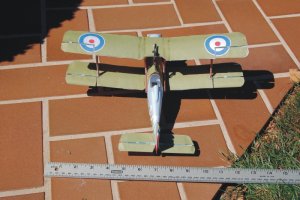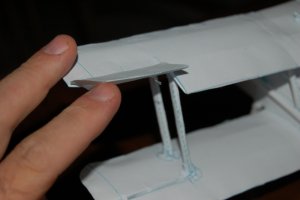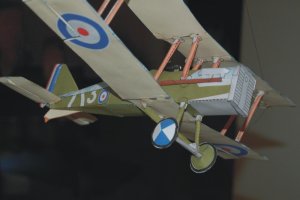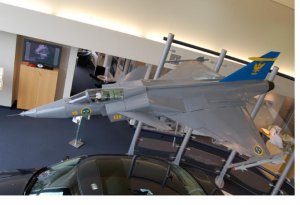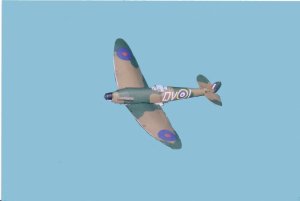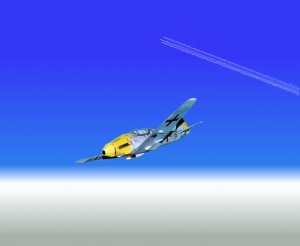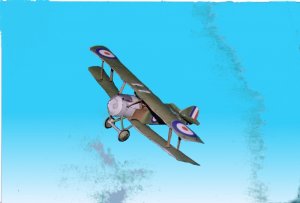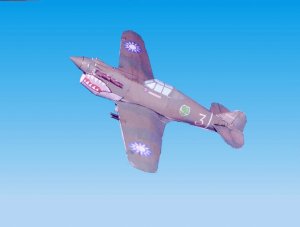I've been designing scale, flyable paper airframes for many years, more or less similar to "card models" but constructed of light weight paper rather than cards stock or card board. Mostly gliders, but some successful electric powered free flight versions as well. Now, I may be crazy:-o, but what with RC sets getting lighter and cheaper, I feel it's time to try 3 axis RC with throttle... a quick build, low risk, low cost model which still looks pretty good and gives the satisfaction of knowing "I built this with my own three hands." Prang the airframe? No problem, salvage the sophisticated bits and print another one, maybe from a different squadron. Tired of what you're flying? Take out the RC & propulsion, recycle the airframe and print yourself a new experience. Problem is, it's been years since I tried anything RC and I don't know the technology of light weight electric propulsion, control surface actuators etc. As for my flying prowess, well it's a good thing the Se5a is pretty docile. So, to any experts out there "Little Help?" concerning what might work and where I might buy it.
My candidate experimental airplane is my 1:24 scale Se5a, a 40% scale-up of an earlier design which had excellent glide characteristics but which was a bit small for a working payload. The enlarged airframe has a span of about 1 foot and weighs 17.5 grams. All paper, white glue and ink. The wings are internally braced, have a flat bottom cross section and a semi-circular upper cross section. They have working ailerons. Efficient and easy to build. The tail planes are likewise internally braced and there are articulated rudder and elevators. There is a nice 4 X 1 X 1.5 inch box in the nose section available to house the motor, RC, servos & battery. Ideally I would like to keep the takeoff weight to about 35 g. Is this feasible with off the shelf components?
I would prefer buying separate components from vendors, but would consider cannibalizing a "fly out of the box" RC airplane if that is cheaper and or more expedient.
I've attached photos of some prototype airframes. If this works out I'd like to move on to my Grumman Wildcat which seems a good prospect.
My candidate experimental airplane is my 1:24 scale Se5a, a 40% scale-up of an earlier design which had excellent glide characteristics but which was a bit small for a working payload. The enlarged airframe has a span of about 1 foot and weighs 17.5 grams. All paper, white glue and ink. The wings are internally braced, have a flat bottom cross section and a semi-circular upper cross section. They have working ailerons. Efficient and easy to build. The tail planes are likewise internally braced and there are articulated rudder and elevators. There is a nice 4 X 1 X 1.5 inch box in the nose section available to house the motor, RC, servos & battery. Ideally I would like to keep the takeoff weight to about 35 g. Is this feasible with off the shelf components?
I would prefer buying separate components from vendors, but would consider cannibalizing a "fly out of the box" RC airplane if that is cheaper and or more expedient.
I've attached photos of some prototype airframes. If this works out I'd like to move on to my Grumman Wildcat which seems a good prospect.



